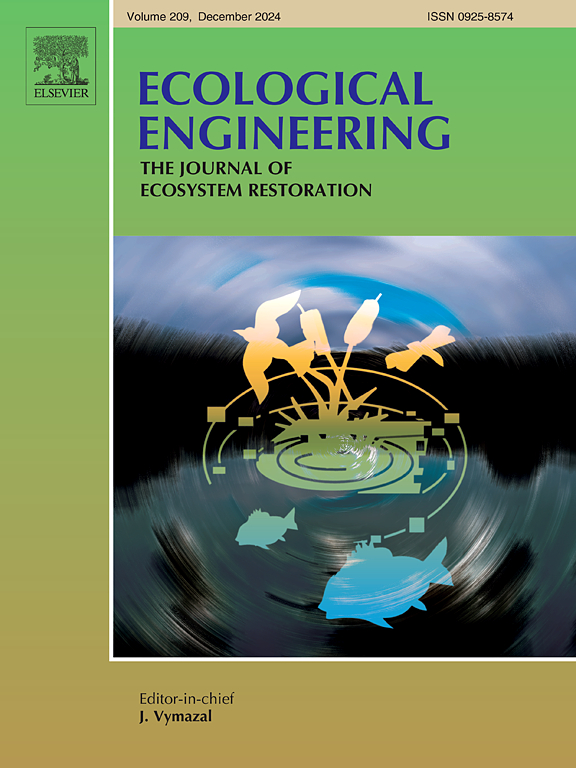Encouraging investments in economic forests for revegetation will reduce cost-effectiveness of Chinese Sloping Land Conversion Program
IF 3.9
2区 环境科学与生态学
Q1 ECOLOGY
引用次数: 0
Abstract
As China's largest ecological restoration program, the Sloping Land Conversion Program (SLCP) aims to improve vegetation coverage and mitigate soil erosion. The policy change of lifting the planting limitations on forest species and providing equal subsidies would encourage farmers to plant more economic forests than ecological forests in the new round of SLCP. However, these changes might lead to uncertainties in revegetation risks in the future because the cost-effectiveness of planting different forest species for revegetation remains unknown. Therefore, we are to evaluate the cost-effectiveness of planting economic and ecological forests in Shaanxi Province, China. Since the implementation of the SLCP, greening trends in Shaanxi Province have increased. It takes approximately four years after afforestation to maximize its ecological benefits. The main investment effect of ecological forests on revegetation is significant and positive; however, the investment return of economic forests is less pronounced. Furthermore, the remarkable crowding-out effect indicates that more economic forest investments would reduce the marginal contribution of ecological forest's to revegetation. Finally, all financial funds invested in ecological forests would bring maximum ecological returns. Hence, policy changes would result in risks of degraded vegetation and a decrease in the efficiency of fiscal investment. The government should be cautious regarding the forestry policy changes in the new round of the SLCP and encourage farmers to select appropriate forest species for afforestation aimed at ecological goals.
鼓励经济造林投资将降低中国退耕还林工程的成本效益
作为中国最大的生态修复工程,退耕还林工程(SLCP)旨在改善植被覆盖和缓解土壤侵蚀。取消种林限制、等额补贴的政策变化将鼓励农民在新一轮森林资源保护计划中种植更多的经济林而不是生态林。然而,这些变化可能导致未来植被恢复风险的不确定性,因为种植不同森林物种进行植被恢复的成本效益仍然未知。因此,我们将对陕西省种植经济林和生态林的成本效益进行评估。自实施SLCP以来,陕西省的绿化趋势有所增加。造林后大约需要四年的时间才能实现生态效益最大化。生态林对植被恢复的主体投资效应显著且正向;然而,经济林的投资回报不太明显。此外,显著的挤出效应表明,更多的经济林投资将降低生态林对植被恢复的边际贡献。最后,所有投入生态林的财政资金都将带来最大的生态回报。因此,政策的变化会带来植被退化的风险,降低财政投资的效率。政府应谨慎对待新一轮森林政策的变化,鼓励农民选择合适的森林树种,以实现生态目标。
本文章由计算机程序翻译,如有差异,请以英文原文为准。
求助全文
约1分钟内获得全文
求助全文
来源期刊

Ecological Engineering
环境科学-工程:环境
CiteScore
8.00
自引率
5.30%
发文量
293
审稿时长
57 days
期刊介绍:
Ecological engineering has been defined as the design of ecosystems for the mutual benefit of humans and nature. The journal is meant for ecologists who, because of their research interests or occupation, are involved in designing, monitoring, or restoring ecosystems, and can serve as a bridge between ecologists and engineers.
Specific topics covered in the journal include: habitat reconstruction; ecotechnology; synthetic ecology; bioengineering; restoration ecology; ecology conservation; ecosystem rehabilitation; stream and river restoration; reclamation ecology; non-renewable resource conservation. Descriptions of specific applications of ecological engineering are acceptable only when situated within context of adding novelty to current research and emphasizing ecosystem restoration. We do not accept purely descriptive reports on ecosystem structures (such as vegetation surveys), purely physical assessment of materials that can be used for ecological restoration, small-model studies carried out in the laboratory or greenhouse with artificial (waste)water or crop studies, or case studies on conventional wastewater treatment and eutrophication that do not offer an ecosystem restoration approach within the paper.
 求助内容:
求助内容: 应助结果提醒方式:
应助结果提醒方式:


